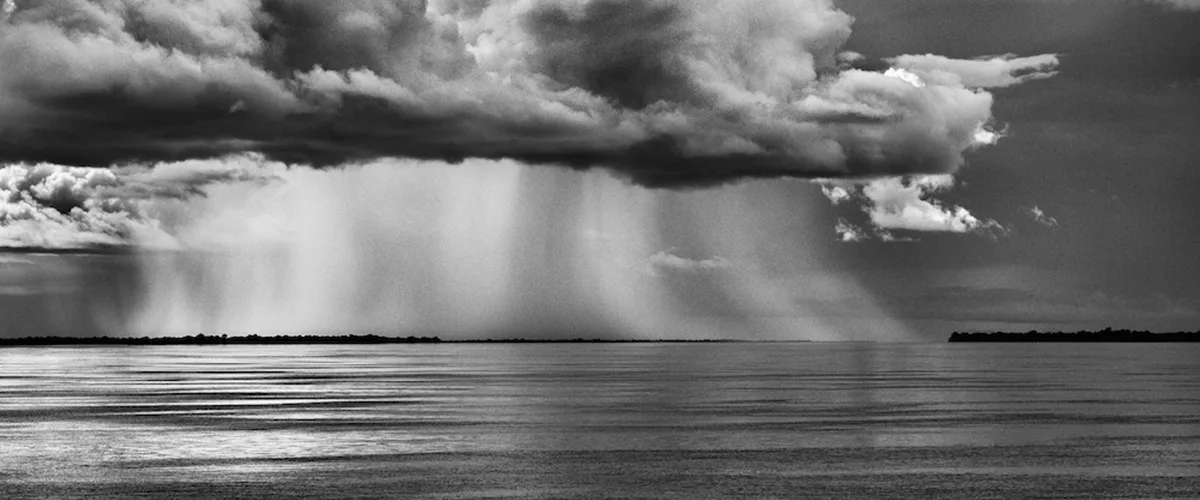By Inger Andersen, Director General, International Union for Conservation of Nature (IUCN)

Nature conservation wasn’t always regarded as the obvious route to development. In Guatemala, where farmers are sustainably growing cocoa while conserving forests, it has become just that. Sustainable cocoa used to make products like fair trade chocolate allow Guatemalan farmers to earn up to US$1000 per hectare, compared to US$60 per hectare for subsistence agriculture.
These agroforestry cocoa farming systems – where cocoa is grown together with trees – substantially boost incomes, provide a habitat for other species and mitigate climate change by absorbing carbon. Their development has been supported by national laws such as PINFOR, an incentive programme for sustainable forest management which IUCN helped create. Guatemala has built nature conservation into its mainstream government policy because this benefits the country, from the local to the international level: it reduces poverty and contributes to international commitments, such as the Paris climate agreement or the Bonn Challenge. Around the world, we are seeing nature conservation incorporated into mainstream policy and business practices, tapping into nature’s huge potential to contribute to global challenges.

A growing role for nature in policy
Brenda Poou, an expert in cocoa grafting in Guatemala’s Lachuá ecoregion, can testify to the benefits cocoa agroforestry has brought her family and community. By offering her services to cocoa farms and nurseries around the region, Brenda, a married mother of two, earns an additional USD 42 every day – equivalent to 3,5 times the minimum wage in the rural agricultural sector in Guatemala. And across the Lachuá region, timber products have grown to represent 14% of household income since the PINFOR forest incentive programme was established in 1996.
Like Guatemala, many countries have now integrated nature conservation into national policy. The UK is restoring natural wetlands as a nature-based solution to coastal flooding; in Costa Rica, the constitution now recognises the right to a healthy environment. But it has not always been this way: natural solutions to global problems have emerged and gone increasingly mainstream over the last few decades.
Global agreements on climate, biodiversity, land degradation and oceans were developed over the last 30 years. IUCN has been instrumental in shaping many of them, and continues to advise on a number of conventions, such as the UN Convention to Combat Desertification and the Convention on Biological Diversity. The UN now assess- es progress on sustainable development using IUCN’s biodiversity indicators to track SDGs on life in the oceans and on land.
Nature – an increasingly powerful ally in climate action

As humanity faces the mounting challenge of climate change, more and more nations are turning to solutions based in nature. Like with other global challenges, the world has gone a long way over the last few decades, first recognising climate change as a man-made problem – and then making nature a key part of the solution.
In the 1960s, global-level recognition of the linkages between human activities, the climate, and nature in general was limited. At the IUCN Members Assembly in Warsaw in 1960, when nature conservation was the reserve of academics, IUCN was among the first international organisations to flag the “impact of man and modern technological development on nature and natural resources”.
Today, climate change is recognised as an urgent global threat by everyone from schoolchildren to business leaders worldwide, and it has been shown that nature can play a crucial role in combating this global menace. A recent study by IUCN member The Nature Conservancy shows that natural climate solutions can provide over a third of the mitigation needed between now and 2030 to keep global temperature rise below 2°C.
Nations are increasingly tapping into this potential. Championed by IUCN through reforestation and other approaches, nature-based solutions to climate change are now included in many national mitigation and adaptation plans and strategies, including in Guatemala, Costa Rica and Mexico.

Business seizing nature’s potential
Just as nature has gone from niche to main-stream in policy over the last decades, so it has found its way into the core of business practice. Back in 1980, IUCN published a ground-breaking document – the World Conservation Strategy, which helped define the concept of sustainable development. It described how business should value and measure its dependence on wild plants and animals so it can make better decisions and ensure “that the ecological processes of which they are part are maintained.” “Such measures,” it read, “would go some way towards ensuring the quality and availability, at reasonable prices, of valuable raw materials.” Since then, IUCN membership has steadily grown and diversified to encompass organisations working in business, health and social issues, and IUCN has provided unbiased, scientifically sound guidance to the private sector and governments. In December 2013, The World Business Council for Sustainable Development (WBCSD) joined IUCN as the first private sector association member.
Consumer pressure and willingness to pay more for sustainable products have further driven business engagement in nature conservation. Product eco-labels didn’t exist 30 years ago. Today, labels like that of IUCN Member Rainforest Alliance give consumers the means of making a real contribution to conserving nature when buying products like coffee, chocolate or bananas. And business engagement in protecting nature is making an enormous contribution to preserving the ecosystems that sustain us.
Conserving the oceans, conserving livelihoods Take ocean ecosystems, both the private and public sectors are acting to conserve marine life because failure to do so threatens our food supplies, coastal protection and livelihoods. The FAO estimates that approximately 57% of fish stocks are already fully exploited and another 30% are over-exploited, depleted or recovering. Countries such as Palau and Chile are protecting marine areas to ensure sustainable fisheries. There are now more than 20,000 MSC (Marine Stewardship Council) labelled, certified sustainable seafood products on sale around the world, from prepared meals to fresh fish. The number of MSC-certified products on UK shelves has grown from 200 in 2008 to 988 at the end of 2011.

We have seen remarkable progress in protecting the world’s oceans over the last decade. Marine protected area coverage has increased from just over 4 million in 2006 to nearly 15 million square kilometres in 2016. Today it covers 4% of the Earth’s oceans, an area almost the size of Russia.In 2016, the Ross Sea became the first marine reserve in Antarctica, and the world’s largest marine reserve. Also in 2016, the US created what is now the world’s second largest marine reserve by expanding the Papahanamokuakea marine national monument.
Progress has also reached the most remote areas of the ocean. This year the UN has formally started negotiations towards an agreement to protect biodiversity in the high seas under its Convention on the Law of the Sea (UNCLOS). IUCN has been heavily involved in the draft process. The high seas represent over half of the global ocean and are currently covered by incomplete legal frameworks. UNCLOS came into force in 1994, but has been subject to very few laws and regulations. This is now changing.
From the icy waters of Antarctica to the forests of Guatemala, we are seeing action to conserve nature at the highest levels of business and government. Nature conservation was once the reserve of niche eco-businesses and green parties. Over the course of just one generation, it has become central to business, politics – and is making a real difference to the lives of ordinary people like Brenda Poou in Guatemala. Although the road ahead remains challenging, the world has finally realised that our lives and futures – whether it comes to food, the climate, energy or economic development – depend on nature.
To read similar articles and reserve your copy email us at subscribe@i-m-magazine.com

















Show Comments +